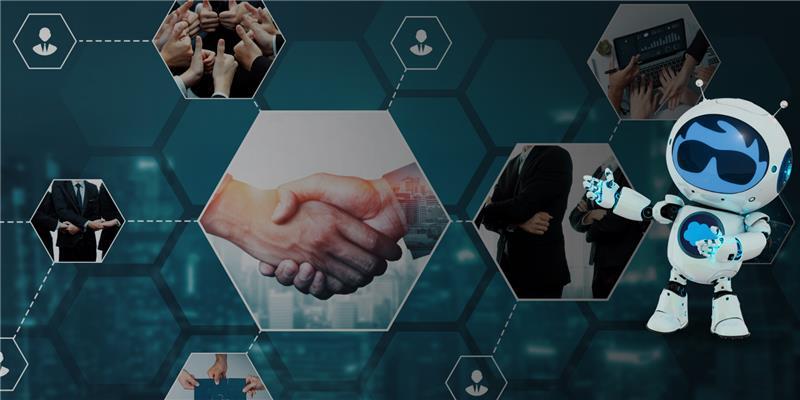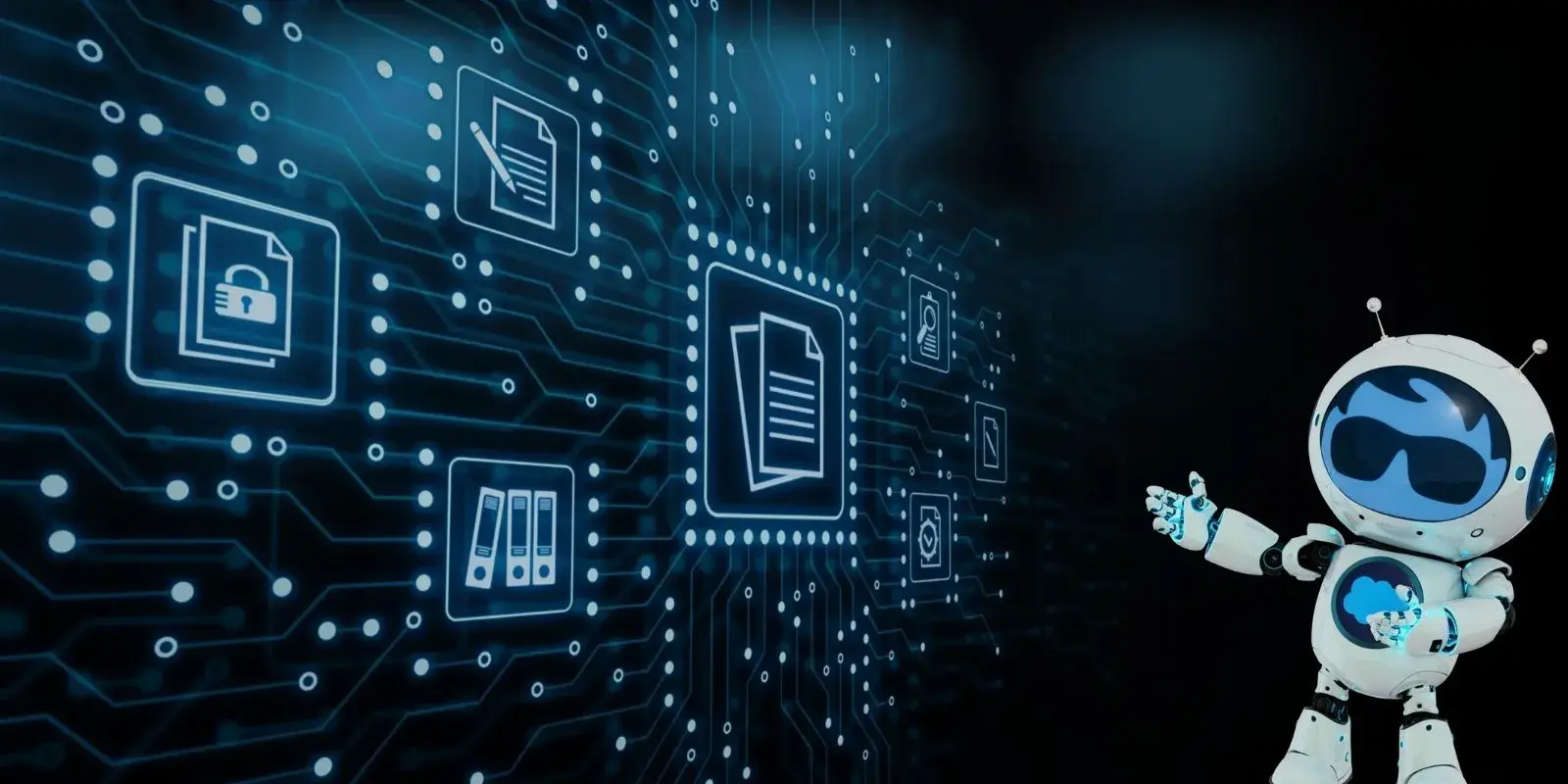From copilots to agents: what’s actually new?
Most teams have tried AI “assistants” that draft emails or summarize calls. Agentic automation goes further. Agents pursue outcomes end‑to‑end (e.g., qualify lead, schedule demo, update CRM, kick off quote), invoking Salesforce actions, orchestrations, and outside systems, then escalating to humans only when needed. Salesforce has leaned in here: Agentforce brought agent building center‑stage, with thousands of working agent prototypes created by customers at Dreamforce ‘24, signaling real momentum behind autonomous workflows.
Under the hood, Salesforce’s AI stack gives consultants the building blocks to make agents production‑ready:
- Einstein 1 Studio to compose actions, prompts, and models (including BYO‑LLM) and embed them into the flow of work.
- Data 360 (formerly Data Cloud) to unify, govern, and activate customer context (including zero‑copy federation with Snowflake/Databricks/BigQuery) that grounds agents with live, trusted data.
- Flow & Flow Orchestration to turn agent plans into reliable, auditable multi‑step automations.
- MuleSoft RPA & Integration to bridge legacy gaps and let agents take actions beyond Salesforce.
- Einstein Trust Layer to enforce data security, policy controls, and safe responses across the AI lifecycle.
Adoption is following: Salesforce disclosed >1,000 paid Agentforce deals in late 2024 and continued expansion into 2025, underscoring enterprise demand for digital labor patterns.
The Productivity Shift: From People-in-Loop to AI-Orchestrated
Legacy CRM challenges often stem from disconnected data, inconsistent workflows, and limited adaptability. As enterprise needs accelerate, agentic automation addresses these by enabling Salesforce ecosystems to act as self-optimizing systems.
Common modernization challenges and how agentic automation resolves them:
- Disparate systems and data silos – AI agents unify sales, service, and marketing data through intelligent orchestration, ensuring real-time synchronization and insight generation.
- Manual processes drain productivity – Autonomous agents reduce entry overhead and administrative follow-ups, freeing teams for strategic engagement.
- High total cost of ownership – Consolidating workflows and AI capabilities within Salesforce reduces integration costs while unlocking continuous ROI through operational efficiency.
- Limited personalization – Multi-agent reasoning systems adapt to buyer sentiment and behavioral markers, ensuring hyper-personalized experiences.
Why AI‑first changes the shape of Salesforce engagements
Traditional CRM delivery focused on records, reports, and routes. Agentic programs optimize decisions and work. That flips the engagement emphasis:
- Discover outcomes, not requirements.
Start from the moment that matters (e.g., first response in under 30 seconds, P1 resolution within one interaction, proposal in same day). Then model the agent plan needed to hit that outcome across systems. - Design the agent system not just the data model.
Your blueprint includes:- Action graph (Flows/Apex/External APIs the agent may call)
- Context graph (Data 360 entities, segments, and features)
- Control plane (Trust Layer policies, escalation paths, reversible changes)
- Observation & learning (telemetry, RL‑style feedback, prompt revision cycles)
- Deliver in thin slices with measurable autonomy.
Release agents behind guardrails, promote from assist → approve‑to‑act → act‑with‑notify → act‑and‑learn as quality thresholds are met. - Operate with AgentOps.
Treat agents like a product: version prompts, A/B test strategies, watch tool‑use traces, and maintain incident runbooks (what happens when an external API or auth policy fails?).
A Reference Architecture for Agentic Salesforce
Frontline surfaces
- Salesforce UI, Slack, portals, messaging, and channels where users or customers trigger agent goals.
Agent layer
- Agentforce/Einstien 1 Studio: skills (actions), prompts, and model policies; support for Salesforce‑managed models or BYO‑LLM.
- Trust Layer: grounding with CRM data, PII masking, toxicity/guardrail checks, zero data retention with external LLMs.
Decision & orchestration
- Flow / Flow Orchestration to sequence multi‑party steps (e.g., approvals, follow‑ups, SLA timers).
Context & activation
- Data 360 to unify customer profiles and stream context to agents; zero‑copy connections to warehouses to avoid brittle pipelines.
Execution & integration
- MuleSoft Integration & RPA for legacy actions (screen scraping, document intake, mainframe ops) and API‑led connectivity.
Starter Backlog: High‑Leverage Agent Use Cases
Sales Cloud
- Qualification Agent: Enrich lead, score, route, book meeting, and brief the AE then update opportunity fields and tasks.
- Proposal Agent: Assemble price/pack, generate statement of work draft, and launch approval via Orchestration.
- Renewal Risk Agent: Monitor product usage and sentiment; open retention playbooks when thresholds trip.
Service Cloud
- Resolution Agent: triage + solve Tier‑1 issues, file entitlements, and dispatch field service when needed; summarize in the case record.
- Knowledge Curator Agent: harvest solutions from closed cases, propose articles, and push to channels after SME approval.
Marketing & Growth
- Audience Builder Agent: construct segments in Data 360 based on intent/activity and launch journeys.
- Lifecycle Agent: detect milestone events (trial expiry, first‑value achieved) and trigger cross‑channel nudges.
Revenue & Operations
- Quote Hygiene Agent: check CPQ completeness, margins, and terms; flag variances, request approvals.
- Forecast Integrity Agent: reconcile pipeline health signals with history; suggest pull‑ins or coverage actions.
Back Office / Legacy
- Document Intake Agent using MuleSoft RPA: capture forms/invoices, extract fields, validate, and post to ERP/CRM.
The KPI Framework that proves value
Measure both efficiency and effectiveness:
- Time‑to‑Value: median time from idea → first agent action in production.
- Autonomy Ratio: % of tasks fully executed by agents (per use case).
- Resolution Metrics: FCR, AHT, reopen rate (Service).
- Pipeline Quality: stage‑to‑stage conversion, cycle time, forecast accuracy deltas.
- Revenue Lift: incremental conversion/Uplift in target segments (Marketing).
- Data Quality: % records enriched/normalized by agents; duplicate rate.
- Safety: policy violations per 1,000 actions; escalation rate.
A simple ROI lens:
(Hours saved × fully loaded rate) + (incremental revenue × gross margin) – (LLM credits + platform + ops) per quarter.
Why ACI Infotech for Agentic CMR Salesforce
Exclusive Agentforce partner, enterprise outcomes.
ACI Infotech is Salesforce’s exclusive Agentforce partner, combining deep Data + AI, integration, and governed automation to turn Salesforce into a system of action safely, at scale. Our partnership brings a dedicated playbook for agent design, Trust Layer controls, and cross-cloud delivery aligned to CIO/CRO/COO priorities.
Proven programs, measurable impact.
- Retail (North America): 60% ROI through Salesforce + MuleSoft integration unifying customer data, automating service journeys, and improving conversion and CX.
- Industrial services: Automated QA for a Salesforce Service Platform and customer web portal raising release quality and accelerating change safely.
- Telecom: Built a Salesforce–SharePoint bridge to streamline document ops and sales execution across Sales Cloud.
- Banking (Fortune 500): $2M OPEX savings via Agile/DevOps modernization demonstrating our ability to execute in regulated environments
See how ACI’s AI-first Salesforce programs deliver measurable autonomy, faster cycle times, and lower cost-to-serve tailored to your industry and stack.
FAQ’S
Salesforce AI agents are goal-oriented, autonomous helpers that plan steps, call approved actions (Flows/APIs), converse, and update records within guardrails you define. They’re built and managed on Agentforce and can act for users or customers in the flow of work.
Yes, Agentforce is designed with enterprise controls: admins specify what data agents can read/write and which actions are allowed; activity is auditable. Salesforce also emphasizes secure model hosting and controls for regulated industries, including finance and healthcare.
High-volume, rules-heavy tasks with clear outcomes: lead qualification and routing, Tier-1 case resolution and summaries, meeting/quote prep, and flow generation/orchestration that spans multiple systems. These deliver quick cycle-time wins and measurable autonomy without deep custom code.
Chatbots/coplots assist; agents act. Agentic automation lets Salesforce agents take initiative, execute multi-step workflows, and escalate to humans only when needed moving from “answering” to “doing” with policy controls.
Reported gains include faster response and resolution times, lower cost-to-serve, and meaningful automation of customer interactions freeing teams for higher-value work. Independent overviews also cite better predictions, cleaner data, and streamlined processes as core benefits.



